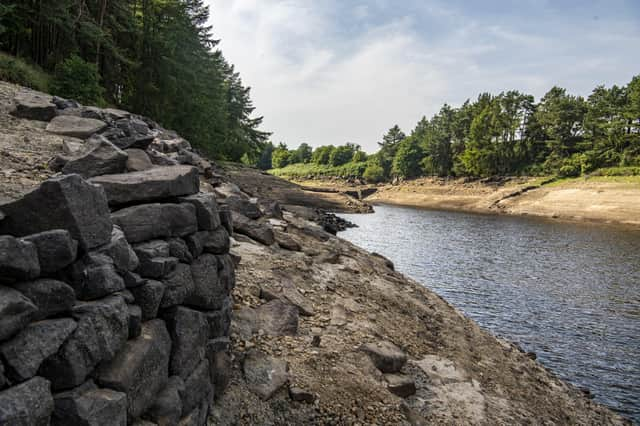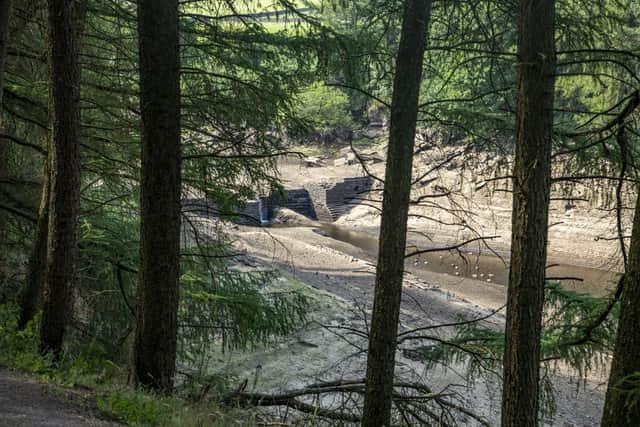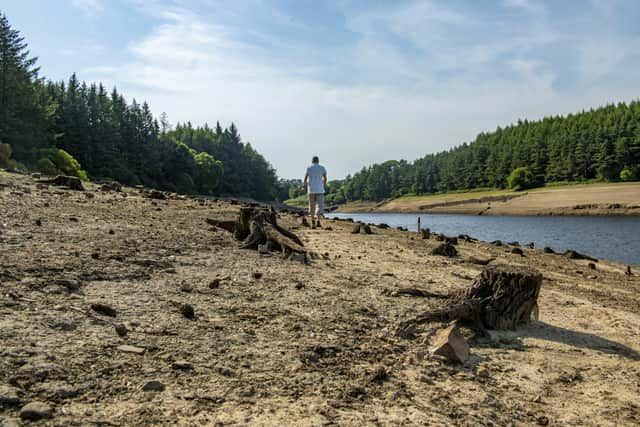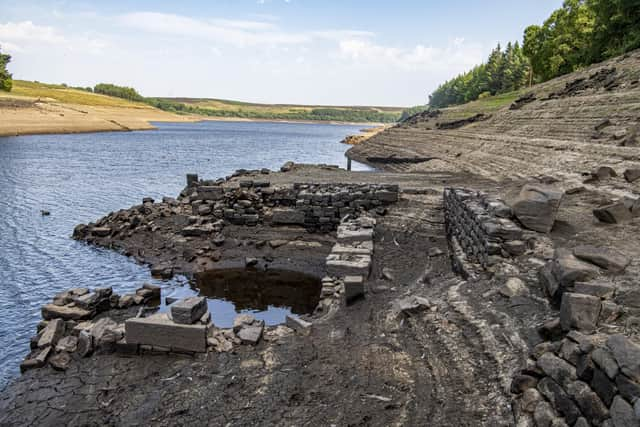Lost West End village revealed as Thruscross reservoir levels drop


West End’s foundations are now visible at Thruscross Reservoir, between Harrogate and Otley, where water levels have receded.
A ghostly church bell is said to sound when the waters run this low – although there is no evidence to support such folklore, even as the boundaries are laid bare, and long-felled tree stumps can once more be seen on the reservoir’s dry, cracked bed.
Advertisement
Hide AdAdvertisement
Hide AdAs Yorkshire Water confirms, the past few days have seen the highest water use in 15 years. And the firm reveals it is moving water around the region to try and balance the impact.


Now pleas have been issued to use water wisely, to let lawns go brown and to turn off the garden hose to reduce the likelihood of restrictions for the region later in the year.
Yorkshire Water’s Emily Brady said: “It’s been a very dry spring and summer. Our reservoirs are feeling the impact and levels do continue to decrease so we’re moving water around the region to try and balance the impact.
“As the ground is incredibly dry, we would need a few weeks of wet weather to help reservoir stocks return to their usual levels. It’s really important people keep taking steps to save water throughout the summer, whatever the weather.”
Advertisement
Hide AdAdvertisement
Hide AdAs Yorkshire was hit by the peak of the heatwave last Monday and Tuesday, with temperatures topping 40C and with wildfires breaking out across parts of the region, water use rose dramatically.


The excess each day rose by enough to supply the equivalent of all York and Leeds. Around 260m extra litres was used, taking the total to more than 3bn litres over two days.
Yorkshire Water said it was investing millions and trialling new technologies to fix leaking pipes faster and had increased the number of staff doing so to move as quickly as it could.
It is also employing marshals at some reservoirs to reinforce a no-swimming policy, urging visitors not to enter the water “under any circumstances”.
Advertisement
Hide AdAdvertisement
Hide AdRecent hot weather has seen an increase in swimming, the company confirmed, despite the evident dangers around under-currents, cold water shock and unseen objects.


“Tragically we have seen a number of water-related deaths across the country this summer, including in our region, and it is important people do not take the risk to enter our reservoirs at any time,” said Ms Brady.
And when it comes to Thruscross, there are warnings to would-be tourists keen to take in the sight of the submerged village as its remains are laid bare.
Thruscross is at the top of a chain of reservoirs and during dry spells such as now it was common for water levels to drop.
Advertisement
Hide AdAdvertisement
Hide AdMs Brady said: “While the remains of the village are interesting, it is important people do not enter the reservoir but take in the scene from a distance.”
When Thruscross was built in the 1960s, the small village of West End had to evacuated, flooded and then completely submerged to make way for the reservoir which would supply Leeds with drinking water.
West End was originally built around a flax mill, although the industry was already in decline when the fourth of the Washburn Valley’s reservoirs was dug in 1966.
The project sounded the death knell for the village, which was partially derelict, and trees were felled, sacred items removed from the church and bodies exhumed from the graveyard before the buildings disappeared completely.
Advertisement
Hide AdAdvertisement
Hide AdThe remains of the mill itself can still be seen at the edge of the water, and the foundations of other buildings are exposed during drought periods.
The settlement’s fate inspired the crime novel In a Dry Season by Peter Robinson, who based the fictional village of Hobb’s End and Thornfield, the reservoir which flooded it, on West End. In the story, a body is discovered when water levels fall, and the flax mill is also mentioned.
Archaeological studies were conducted on five of the exhumed bodies dating from the 17th and 18th centuries to find out more about their diet and lifestyle.
Population decline had gathered pace way before the reservoir was built, and West End was referred to as a ‘ghost village’ as far back as 1911, after the Leeds Corporation had purchased both Low Mill and tracts of land nearby in anticipation of a fourth reservoir in the area. Only six houses were occupied - four of them holiday lets - at the time the land was submerged.